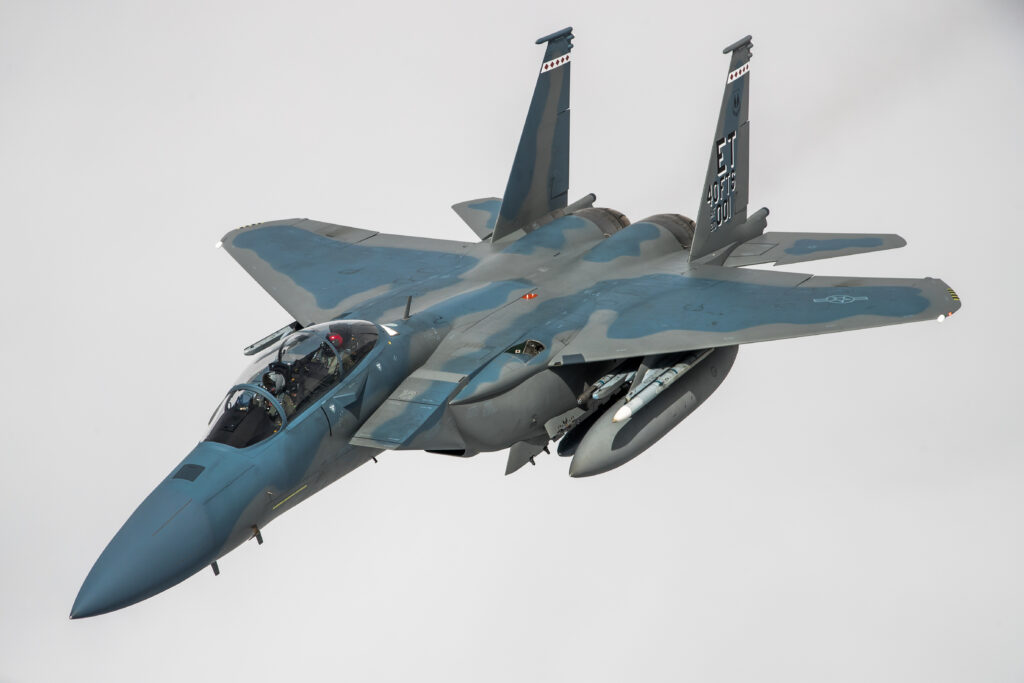✳️ Introduction
The McDonnell Douglas F-15 Eagle is one of the most successful and iconic air superiority fighters in aviation history. Designed during the Cold War era to counter advanced Soviet aircraft, the F-15 has proven itself time and again through decades of unmatched aerial dominance, boasting an incredible combat record of 100+ kills with zero air-to-air losses.
First flown in 1972 and entering service with the U.S. Air Force in 1976, the F-15 continues to fly with upgraded avionics and weaponry, serving multiple nations and inspiring newer variants like the F-15E Strike Eagle and F-15EX Eagle II.

🛫 Design Philosophy
The F-15 was built around speed, agility, and firepower. It combines:
- A powerful radar system (originally AN/APG-63)
- High thrust-to-weight ratio
- Large wings for maneuverability
- Heavy armament, including a 20mm cannon and 8 air-to-air missiles
It was engineered to “not just compete, but dominate” in any air combat scenario.
🎖️ Major Achievements
- Over 100 air-to-air victories without a single loss in dogfights.
- Played a key role in Operation Desert Storm (1991), downing more than 30 Iraqi aircraft.
- Used by U.S., Israel, Japan, Saudi Arabia, South Korea, and Qatar.
- Israeli F-15s have recorded kills against MiGs and Mirages, sometimes even after sustaining serious damage.
- Modernized F-15EX Eagle II to serve alongside stealth fighters like the F-22 and F-35.
📊 Specifications of F-15 Eagle
| Attribute | F-15C/D Eagle |
|---|---|
| Role | Air Superiority Fighter |
| Manufacturer | McDonnell Douglas (now Boeing) |
| First Flight | July 27, 1972 |
| Introduction | January 1976 |
| Crew | 1 (F-15C), 2 (F-15D) |
| Length | 63.9 ft (19.44 m) |
| Wingspan | 42.8 ft (13.05 m) |
| Height | 18.5 ft (5.63 m) |
| Empty Weight | 28,000 lb (12,700 kg) |
| Max Takeoff Weight | 68,000 lb (30,845 kg) |
| Engines | 2 × Pratt & Whitney F100-PW-100/220 |
| Thrust (with afterburner) | 23,770 lbf each |
| Max Speed | Mach 2.5+ (~3,018 km/h at high altitude) |
| Combat Radius | 1,061 km (660 mi) |
| Ferry Range | 5,600 km (3,500 mi) with drop tanks |
| Service Ceiling | 65,000 ft (20,000 m) |
| Rate of Climb | 50,000 ft/min (254 m/s) |
| Armament | 1× M61 Vulcan 20mm cannon, 8× AIM-9/AIM-120 missiles |
| Radar System | AN/APG-63 (upgraded versions available) |

🔧 Variants
- F-15A/B – Original production models
- F-15C/D – Improved versions with better avionics and radar
- F-15E Strike Eagle – Ground attack capable, two-seat multirole version
- F-15EX Eagle II – Latest generation variant with digital systems, fly-by-wire, and next-gen weapons
🌍 Global Operators
- United States Air Force
- Israeli Air Force (IAF)
- Royal Saudi Air Force
- Japan Air Self-Defense Force (JASDF)
- Qatar Emiri Air Force
- South Korea (ROKAF)
🧭 Final Thoughts
The F-15 Eagle is a benchmark of air dominance. With its combination of raw speed, lethal weaponry, and unmatched kill record, it remains one of the most respected fighter aircraft in the world.
Even after 50+ years, it’s being upgraded and integrated into modern fleets thanks to its powerful airframe and adaptability.

